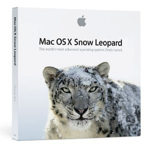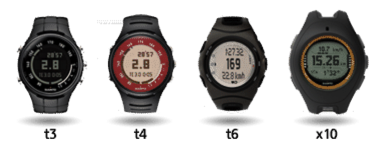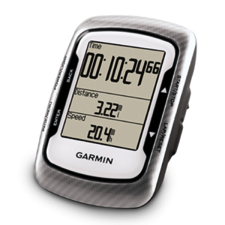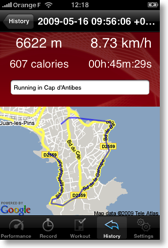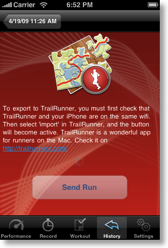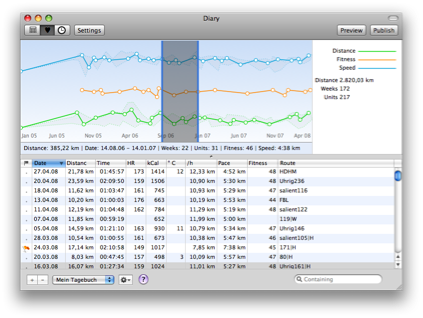TrailRunner 3, TrailRunner mini and the Mac App Store
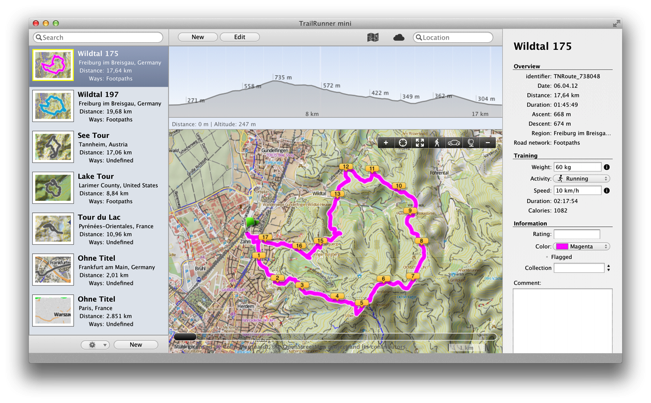
What is the difference between TrailRunner and TrailRunner mini
If you are accustomed to TrailRunner, TrailRunner mini is just the openStreetMap based route planner -- no diary, no GPS import interfaces -- but can import files in the gpx, tcx, pwx and kml file formats!
In addition TrailRunner mini can automatically synchronize routes created and published by TrailRunner touch for the iPad or other instances of TrailRunner and TrailRunner mini (possibly running on a different machine, or to be more precise: can import routes from your dropbox).
Watch the video tutorial on what TrailRunner mini can do
Take a look into the TrailRunner tutorial to see what TrailRunner is capable of
Should I buy both versions?
Well -- as ever -- that depends…
If you consider yourself an expert routing freak with a GPS on your wrist, use TrailRunner 3. If you find TrailRunner 3 too complicated or bloated and you're only in need of a decent and simple to use route planner, go with TrailRunner mini.
In the end -- it depends on your personal bias between simplicity and features.
Well, and then there's TrailRunner touch for the iPad
TrailRunner touch is almost identical to TrailRunner mini, except that it's tailored for the iPad and the touch interface. As both support dropbox syncing, both apps can have a shared route database.
Read more about TrailRunner touch
What app do you recommend for the iPhone?
The closest relative of TrailRunner mini and TrailRunner touch is RaceBunny for the iPhone. RaceBunny is really simple. RaceBunny can record your trips and can import routes created in TrailRunner, TrailRunner mini or TrailRunner touch and display them as colored background routes.
So basically you plan a tour in either of the other Apps publish them to your shared dropbox route database and then display them as background routes in RaceBunny.
Read more about RaceBunny
Watch how background routes are set in RaceBunny
Alternatively there's Trails for the iPhone developed by Felix Lamureux. Trails is probably the best GPS recorder for the iPhone. Trails can send recordings via Wifi to TrailRunner but not TrailRunner mini. Alternatively you can send emails out of Trails to any of your devices and import the attached GPX file into TrailRunner mini, TrailRunner touch or even RaceBunny.
Read more about Trails
Why is TrailRunner 3 free/donation-ware while the other Apps are not?
I started all this with TrailRunner and it's for historical reasons that TrailRunner 3 is donation-ware.
As TrailRunner 3 is rather complicated to use, I chose to rewrite the heart of it for TrailRunner mini. The younger sibling is much easier to use and has far less features. But in an amount and complexity I can easily support and extend in the future. Something I can't do for every aspect of Trailrunner 3. Therefore TrailRunner 3 still is donation-ware while TrailRunner mini is more or less commercial software.
Bottom line
I develop all this stuff in my spare time. That's crazy, I know. So whatever app you use, have fun with them, let me know what you think and please understand that in the end -- it is the money I make with them what gives me the motivation to stick with it.
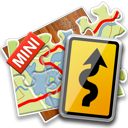 | 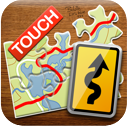 |  | ||
|---|---|---|---|---|
| TrailRunner 3 | TrailRunner mini | TrailRunner touch | RaceBunny | |
| openStreetMap Route planner | ✔ | ✔ (1) | ✔ (1) | — |
| off-road route planner | — | ✔ | ✔ | — |
| local network of tracks route planner | ✔ | — | — | — |
| local network of tracks management | ✔ | — | — | — |
| community routes browser and import | ✔ | — | — | — |
| route profile analysis | ✔ | ✔ | ✔ | — |
| shared iCloud database | — | ✔ | ✔ | ✔ |
| activity recording (GPS) | — | — | — | ✔ |
| activity diary and statistics | ✔ | — | — | — |
| pricing | Donation | AppStore | AppStore | AppStore |
(1) TrailRunner mini and TrailRunner touch use a very fast and modern routing engine, compared to the routing engine of TrailRunner 3.
RaceBunny 4 -- Plan and Follow a route
- Record activities and send them to TrailRunner for analysis and journaling in the diary.
- Plan a route in TrailRunner, send the track to RaceBunny and follow the course.
- Select between different background map types like Google Satellite, Google Terrain, OpenStreetMap and OpenCycleMap
- GPS location recoding is being done using multitasking resulting in high resolution recoding data.
- On devices supporting app switching with multitasking, GPS recoding keeps running even when RaceBunny is running in the background.
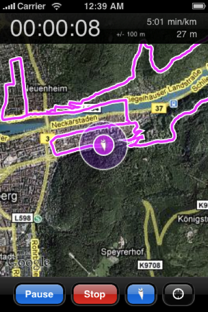
To use RaceBunny, follow these steps in TrailRunner:
- Go to Preferences > Synchronize and set RaceBunny as the iPhone partner application.
To send routes to RaceBunny
- In the main document window, click the iPhone icon and in the left pane select the send-tab.
- Start RaceBunny on the iPhone.
- Select a route in TrailRunner and click the send button.
- The selected route is being transferred to RaceBunny and is added to the list of routes.
To receive completed activities from RaceBunny
- In the main document window, press the iPhone icon and in the left pane select the import-tab.
- In RaceBunny tap on the tracks button, select an activity and tap on the Send button.
- TrailRunner will open the import pane. Add additional comments and import the activity to your diary.
Additional notes
- To exchange data between TrailRunner and RaceBunny a domestic WiFi connection is being required.
- RaceBunny keeps recording your GPS location in the background. This works only on devices with multitasking support and this may also increase your battery consumption.
Download RaceBunny for free from the app store:

TrailRunner 3.7 — Mac OS X 10.7 only

Unfortunately that hinders me to further support Mac OS 10.6 because apple ceased that support for my configuration.
I don't like that but it's time to move on.
How to help out translating TrailRunner to your language
With the fabulous help of many users, TrailRunner is localized to German, Swedish, Italian, traditional Chinese (Taiwan), French, Dutch and Japanese. To everyone who had completed the original translations or improved them by their comments, thank you very much!
[Updated] Italiano: Cesare, Oskar, Pierino, Giancarlo
Japanese: Takashi, Toshimi, Norihisa
Czech: Marek
Français: Raphael, Xavier, Olivier, David
Español: Oscar, Juan, Javier
Taiwanese: Nitoc
Dutch: Steven, Bart
Swedish: Henrik
Simplified Chinese: Myckel
If you like to translate TrailRunner to your language or if you would like to supplement an existing translation, please contact me.
I have set up GoogleSpreadsheets you may then use for your localization process:
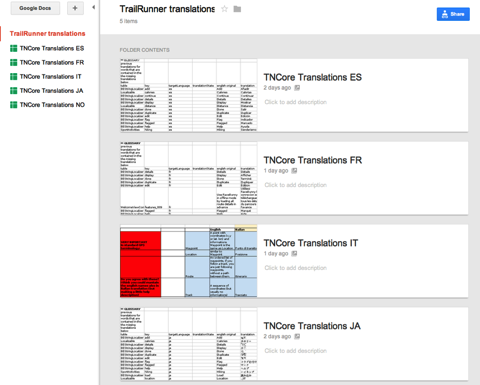
TrailRunner 3.6 — Mac OS X 10.6 only
As I described before, it is my long term goal to make TrailRunner mini more or less feature complete, migrate as much as possible into TrailRunner 3.6 and eventually start working on TrailRunner 4. That all is still distant but things will happen step by step.
And as I am writing this, thanks everyone for your continued support and trust.
TrailRunner 3.3 builds will not automatically update into TrailRunner 3.6 as I cannot determine Mac OS X version you are running and for OS X 10.5 the updated version would not run. Therefore please manually update to TrailRunner 3.6 or wait until your version times out and you are forced anyway to do something.
You can download the latest build here: Download TrailRunner 3.6 for Mac OS X 10.6 and above.
TrailRunner and Nike+ GPS app for iPhone
The Nike+GPS importer has the following features:
- Import all your stored workout sessions from your nikeplus.com account into your TrailRunner diary
- Import the recorded GPS track
- Import additional notes taken in the "How was your run" section of the app.
- Compare your sessions using the advanced tools in TrailRunner.
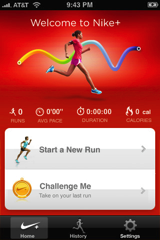
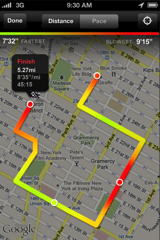
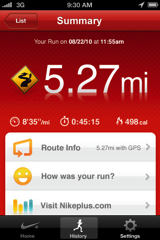
> Read more about how to use The Nike+GPS app with TrailRunner
Use TrailRunner with Suunto Devices
Moveslink is an application that connects your Suunto device to Movescount. Moveslink is always running when you start your computer so you can plug in your device any time.
Set TrailRunner > Preferences > Synchronize > Helper Application to Suunto Moveslink.
In TrailRunner click on the import from device button in the main application toolbar.
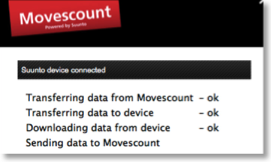
The Suunto MovesLink application will start, automatically downloading your fitness data from your device and uploading the data to Movescount.
Quit the MovesLink application and follow the screen instructions in TrailRunner.
Please note that with all other device data, TrailRunner can only display fitness data that also contains distance information. In this case you should always wear a foot-pod.
> About Suunto Movescount
> About Suunto Moveslink
> Download Suunto Moveslink for Mac OS X
Follow your routes
iPhone with Nike+GPS
[Update] Nike+GPS is available in the app store.
Download and install Nike+GPS app from the AppStore.
Register a nikeplus.com account at nikeplus.com
Make a new recoding with the Nike+GPS app and synchronize your data with nikeplus.com
Set TrailRunner > Preferences > Synchronize > Apple + Nike to nikeplus.com
In the TrailRunner toolbar of the main application window, click on the Nike+Apple Icon.
In TrailRunner, login with your nikeplus.com account data.
TrailRunner will read your workout sessions from your nikeplus.com account
Import selected workouts.
TrailRunner will also import any additional notes taken within the iPhone app.
iPhone with Trails 4
Download and install Trails from the AppStore.
Set Trails as your helper application in TrailRunner > Preferences > Synchronize > iPhone.
Trails can send routes to TrailRunner, and Trails can receive routes from TrailRunner
To send routes to Trails:
- In the main document window, click the iPhone icon and in the left pane select the send-tab.
- Start Trails on the iPhone.
- Select a route in TrailRunner and click the send button.
- The selected route is being transferred to Trails and is added to the list of imported tracks.
ForeRunner

Then select a route in TrailRunner and click the Send toolbar button in the main document toolbar.
Click the Export route button and LoadMyTracks will launch and transfer the course to your GPS device.
iPhone with RaceBunny
Set RaceBunny as your helper application in TrailRunner > Preferences > Synchronize > iPhone.
Follow the instructions as described here: Using RaceBunny with TrailRunner
iPhone with 321run

Download and install 321run from the AppStore.
Set 321run as your helper application in TrailRunner > Preferences > Synchronize > iPhone.
Read more here: Using 321run with TrailRunner.
iPhone with Motion-X GPS

Create a Route in TrailRunner and export the Route as a GPX-track.
Send the GPX file via Mail.app to gpsimport@motionx.com
A Mail message will be returned to you. Open this Mail Message on your iPhone and import the track into Motion-X.
Are you an iPhone App developer interested in the TrailRunner Wifi API?
Import FIT files from Garmin Edge 500
Added Support for the Garmin FIT file format. This is the new data storage format for the Garmin Edge 500 and newer devices.
To synchronize your Edge data with TrailRunner follow these steps:
- Set TrailRunner > Preferences > Synchronize > Helper Application to Garmin USB Mass Storage
- In the Main document toolbar, click on the Import from device icon.
- An import pane should now open on the left, decoding and displaying your stored activities.
Synchronizing your diary
The reason I write this blog entry is that many user request a possibility to sync the diary between two computers.
As you might already know, TrailRunner stores all vital information within your home directories Application Support folder
To do so, follow these steps:
- Download and install Dropbox.
- By default, the Dropbox application creates a new folder in your home directory called Dropbox.
- Open this folder and make sure that a folder named Documents exists within. If not, create it with the exact spelling.
- Now go to: [yourhome]/Library/Application Support/
- Within, find the folder named TrailRunner and move this into the aforementioned Documents folder.
Next time you start up TrailRunner, the application will check on if your home directory contains the following folder:
[yourhome]/Dropbox/Documents/TrailRunner/
If that's the case, TrailRunner will access this location instead of the default Library/Application Support location
Sidenote: To make this practical, TrailRunner will move your local cached map tiles out of the Library/Application Support folder into the Library/Caches folder. This heavily reduces the load on your 2GB free storage at dropbox.com
> www.dropbox.com
Screencast for TrailRunner (spanish)
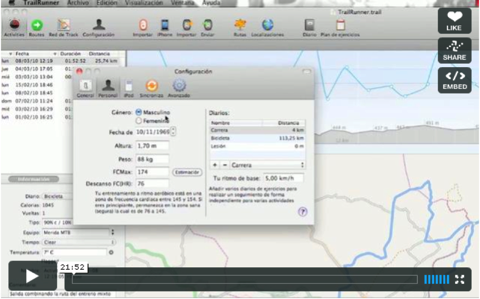
Si usted puede entender español, echa un vistazo:
> TrailRunner: Gestión de tracks y entrenos (incluye screencast detallado)
TrailRunner 3.0 -- Improvements on the way
Reworked UI and wording
To better meet the vocabulary being used in other applications, TrailRunner will no longer speak about workouts but activities.
Also activities, routes and your network of tracks are displayed in a better UI.
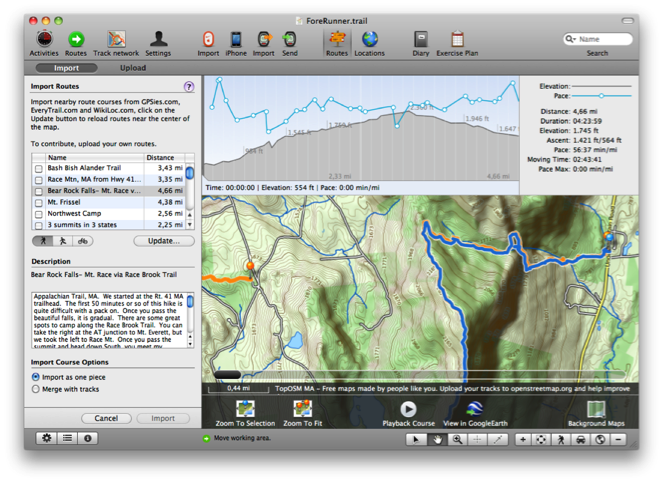
All application modes now come with their own dedicated toolbar at the bottom end of the window making the UI much more clearer.
New Network of tracks editor
The new editor makes managing your network of tracks much easier. Drag selection and shift click extent selection lets you select more than one element
Operations on the action toolbar give you the toolset to effectively remove duplicate tracks and waypoints.
A list of modified tracks on the left helps you in finding out what was newly added to your network and may contain duplications to be merged into your network of tracks.
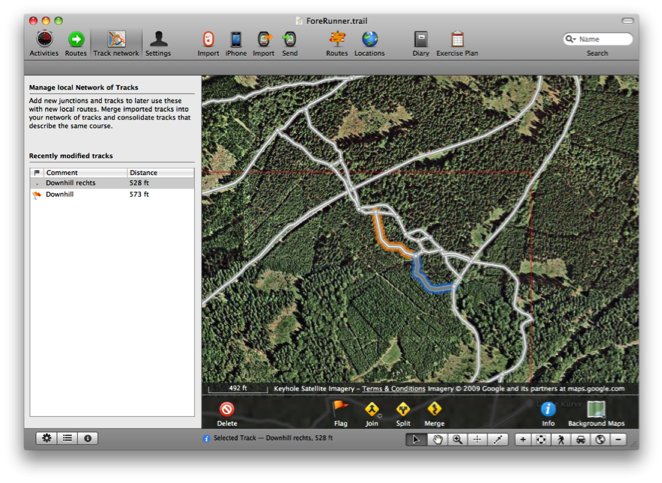
WayPoint Perimeters
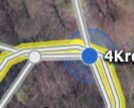
In the new network of tracks editor, you now see this perimeter range around selected waypoints and you can drag the border to extend the range.
This is especially useful when you have locations where great chaos lies within because many routes start and end somewhere around this spot. Now you can just increase the perimeter of one representative for this location and TrailRunner will then be able to better consolidate new elements within this area.
Better OpenStreetMap Source
Changed the Background Map to CloudMade openStreetMap Fine Line with a contour overlay.
To effectively reload all map tiles, remove the
Improved Integration with EveryTrail
Improved Diary
The diary window now displays a map and more statistical information on the selected activity.
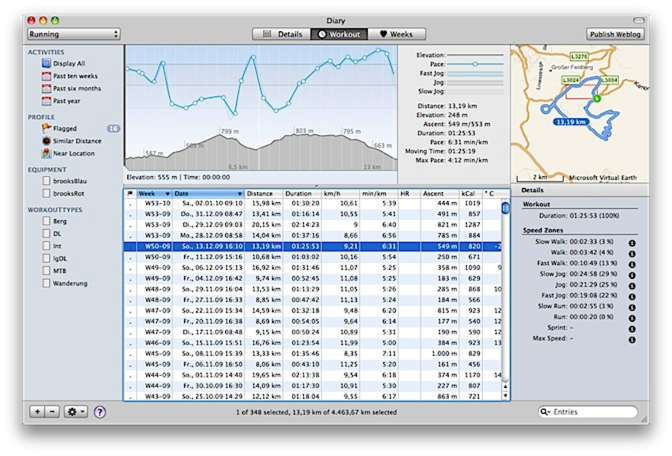
Simplified process of localization
Over the years, the number of strings requiring localization grew to a huge number. A new database based application now helps localizers manage and update the localizations with a very easy interface that also contains a ToDo list and automatic pre-translation provided by translate.google.com
If you would like to help out with an updated or even new localization, please contact me.
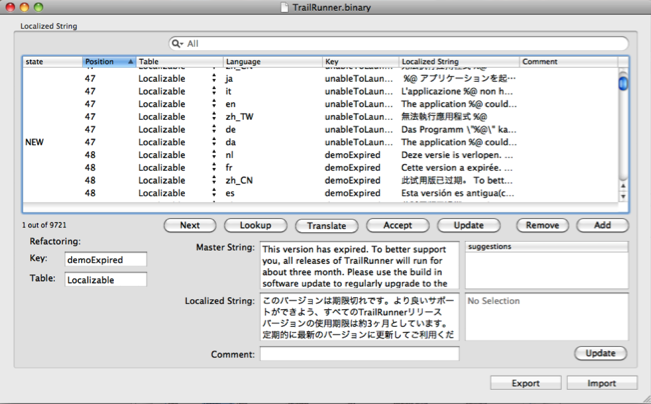
QuickGuide for TrailRunner 3.0
The QuickGuide shows you all main features of the application. Great for testing everything out:
> QuickGuide
TrailRunner 2.1 -- Diary, Trim and iPhone
Diary
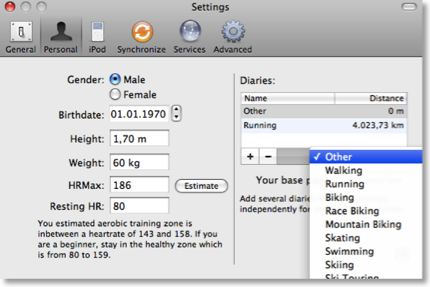
So in future versions diaries can have different parameters for calculations.
TrailRunner 2.1 will already honor speed units like distance per hour or minutes per distance for sport kinds and also will calculate calories with a different formula.
This migration should solve many startup performance problems and will keep your mac responsive even with very large diaries.
Trimming workouts and Tracks
I do not know why I did not add this earlier but you can now trim workouts to be imported and routes within the map. Trimming means that everything from the edge up to and including the selection will be removed.
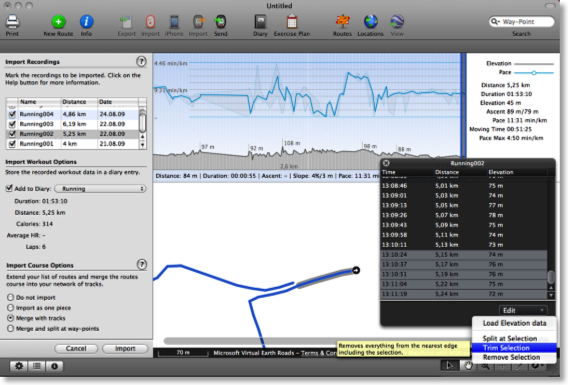
The screenshot shows a workout to be imported. You can either select something in the graph and then hit the backspace key or you open the track editor and use the Trim Selection command.
Update: You can now even remove data points in the middle of a track. There’s a new tutorial available explaining all operations available (Tutorials > Import and edit Tracks)
Improved Importers
TrailRunner 2.1 can now import Lap information from LoadMyTracks gpx files. Also GPX files are being loaded much faster due to an asynchronous decoding. Same goes for large tcx files you drag onto the TrailRunner application icon or main window.
The workout importer for non GPS workouts (the one that shows a list of routes below) now also displays a target diary selection menu.
Improved Map Speed
Though I highly recommend to remove any duplicate tracks within your map by following the instructions in the Mastering Track Merge tutorial, performance can be pretty bad with many long tracks on your map. In TrailRunner 2.1 I am testing a new display caching approach and have found results to be very good. Scrolling on my machine went up from 24fps to up to 60fps. But in most cases you should get 2x.
Other Improvements
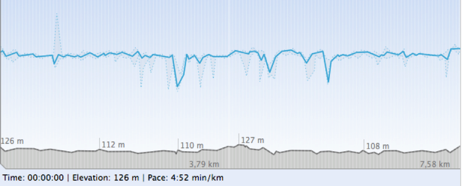
General UI: Added a two finger zoom gesture for modern MacBook trackpads.
Local Route Editor: Added a drag over track to be included rerouting where there was only a drag to way-point rerouting before.
Streets Route Editor: Improved the OSM routing for very long route calculations.
Route Import: Added EveryTrail.com as an import source
Weblog publish: I removed the private and public comment approach as it caused some trouble in the past. When you publish your weblog, all notes will be published.
Export preserves timing: When you export tracks in TrailRunner, the original timing information will be preserved. This makes it posible to read data from your device and then later use an export for geo-tagging.
Route Filtering: The main window search field now filters for routes that contain the given search string in either their name or in the name of any way-point they come across. For example: say a route has a name of biking and goes over a waypoint called ruin, then a search term of ru will find this route. To filter on way-point names only, whith this example just enter wp:ru into the search field. To filter on route-names only, enter rte:ru into the search field.
Before you install TrailRunner 2.1
As TrailRunner uses a new diary store, you should better make a backup of your old.
All data in TrailRunner is being stored within the following folder on your Mac:
< yourhome >/Library/Application Support/TrailRunner/
You old diary was stored in RunLog.xml
When the new version starts up, it will migrate your old diary entries into the new diary. The new file is named ActivityStore.sqlite
A backup of your old diary will be copied to Archive/RunLog;4.xml for if there’s a problem with the migration. You can always move this file back and rename it to RunLog.xml
Please note that even after the migration was done, a much smaller RunLog.xml will stay in place, as it still contains some legacy data. So should you require to migrate back, just delete this file.
Important note: You can not use TrailRunner 2.0 at the same time as TrailRunner 2.1 as after the migration the diary will appear to be be empty on 2.0
Jump on the TrailRunner 2.1 track
TrailRunner 2.1 has its own app-cast so if you download the version below, you will be notified on updates.
> Download TrailRunner 2.1
> Import and Edit Tracks Tutorial
> Mastering Track Merge Tutorial
Please give feedback in case you have any trouble with the migration or other stuff.
Have fun,
- berbie.
TrailRunner 2.0 -- Have a mobile training Coach
321Run is an iPhone coach for running. Learn to run more efficient, lose weight, increase your speed and get prepared for competitions. The app follows your runs with the GPS of your iPhone and records your run stats and tracks. You can then send these recordings over to TrailRunner.
The cool features of 321run are
- Record your workout
- Listen to how far you've gone and the duration of your training.
- Set yourself goals and reach them during your workout.
- Setup and follow Training plans
Find out more about 321run:
- Features
- Screenshots
- 321run in the AppStore
TrailRunner 2.0 -- Routing and Communities
Community route exchange
The Route exchange with GPSies.com, one of the world biggest routing portals, is now grouped in one management panel.
Added a Hiking, Running and Biking filter to the GPSies route import.
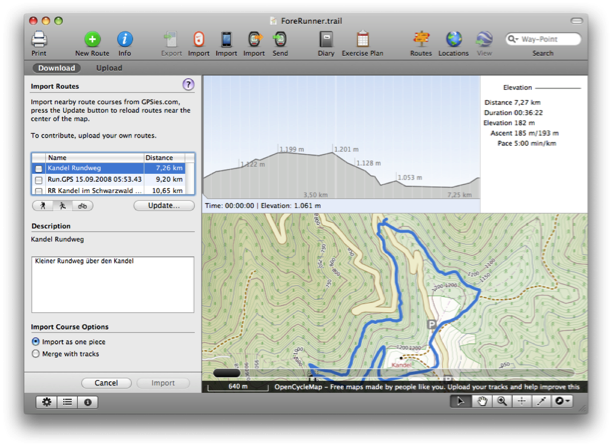
Routing service and route editor and elevation download
Added routing service based on the Cloudmade/OpenStreetMap trail network.
The route editor for routes based on the personal track network was rewritten from ground up.
Elevation data for routes is now automatically being loaded from an internet service
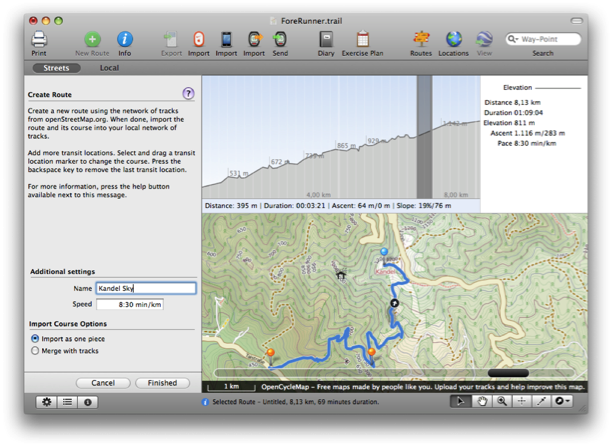
Overall usability improvements
A new route management tool was added to the editing controls toolbar.
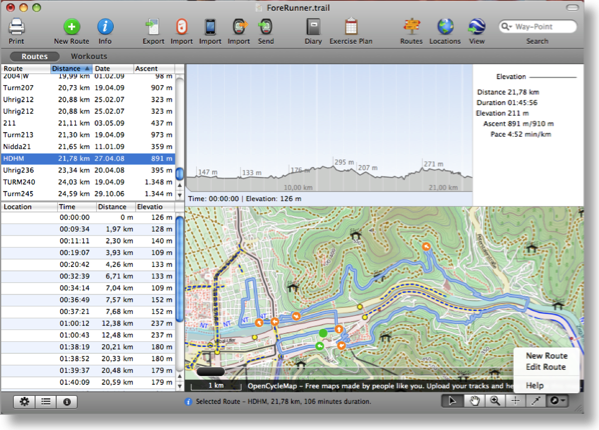
Download: TrailRunner 2.0
TrailRunner 1.9.1 - Laps and Diaries
Please read below, what the new features the new release has to offer. Thanks for everyone sending me bug reports and feedback.
Diary Assignment
In previous versions of TrailRunner it was not possible to assign imported workouts to diaries (if you have added more than one diary in TrailRunner > Preferences > Personal)
Now when you import a workout, you can choose what diary the diary entry for the workout should go into.
(Please also note that in the main diary window you can add an optional column “Diary” to move entries between diaries )
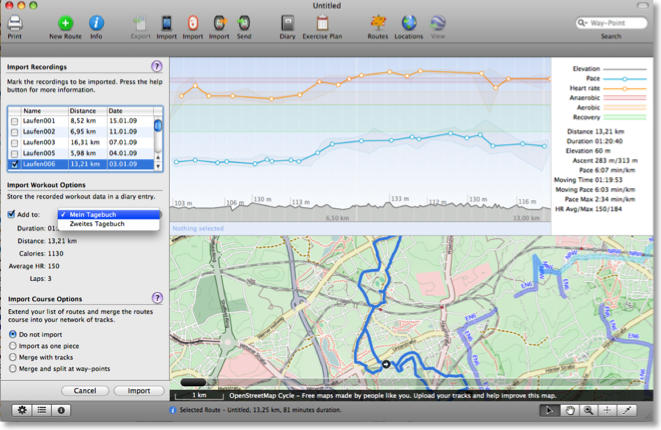
Laps Import and display
TrailRunner now imports lap information from your Garmin fitness device. As a side effect, TrailRunner displays average and maximum values stored in the device and does not calculate these if values are available.
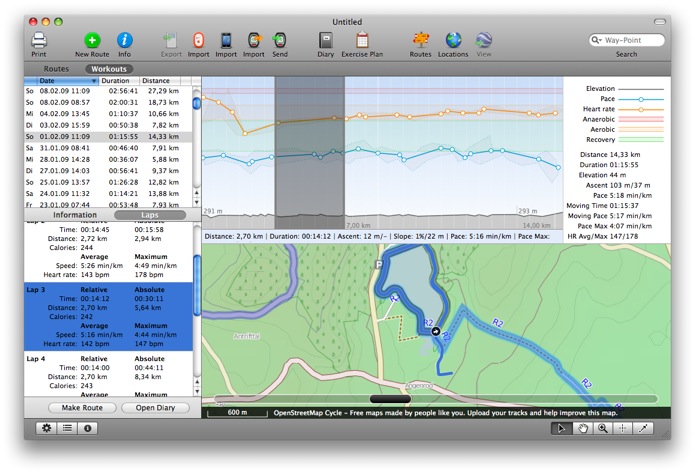
Route Sharing
Another improvement now the handling for sharing routes. Press the routes button in the main windows control bar to display the route sharing download and upload panes. You now can easily switch between both modes. As this is a feature for sharing, please do not forget to upload your own favorites to GPSies.com
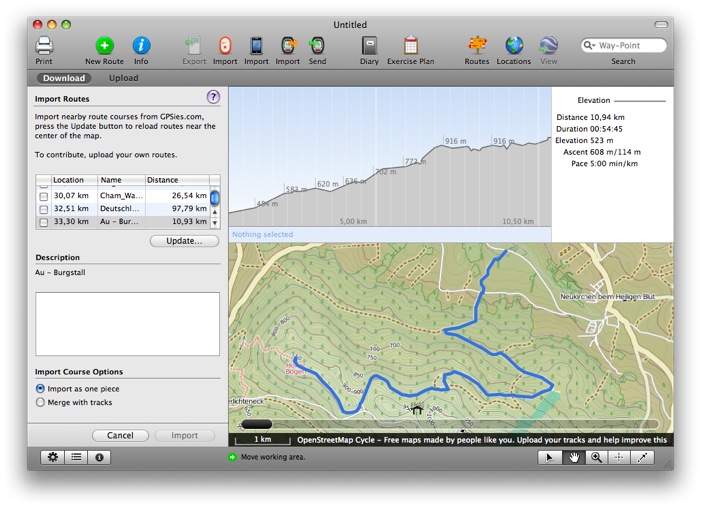
TrailRunner 1.9 - Garmin ANT Importer
Open the application preferences and select the Garmin ANT Agent as your helper application.
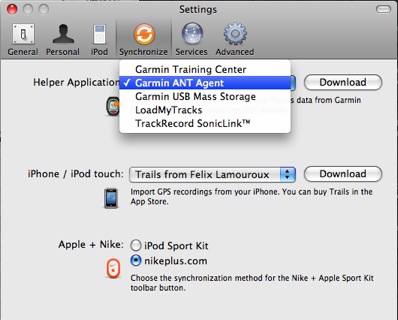
Press the Import Button in the main windows toolbar and follow the steps described there.

Check the workouts you want to import either as a diary entry or (if available) as a route.
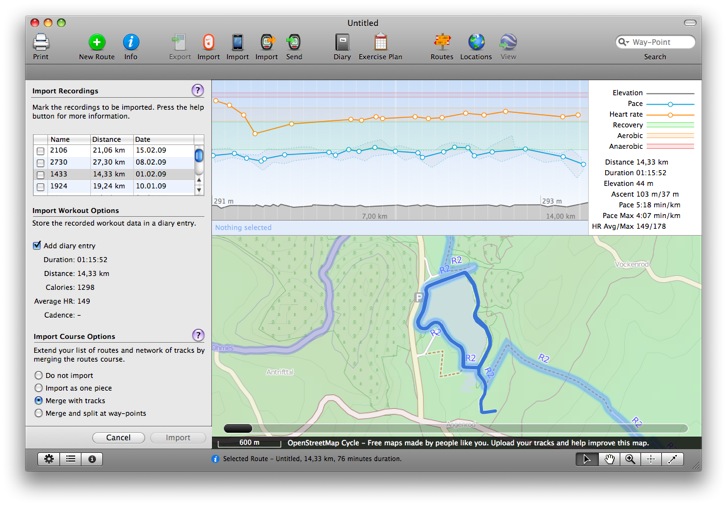
TrailRunner 1.9 - Calling Trails

Trails is the only GPS iPhone app that allows you to record, import and export tracks onto your iPhone. Trails is an iTunes Staff Favorite!
Record maps while hiking, on bike trips or while jogging directly on your iPhone. Easily import tracks and follow hikes of others!
This is how it works:
Download Trails
If you did not already, buy Trails in the app store and make some route recordings. Please note that the TrailRunner and Trails data exchange requires TrailRunner version 1.9 and Trails version 1.8. A domestic Airport/Wifi network is required to transfer data from the iPhone onto your Mac.
Transfer Routes

An importer pane will open on the left hand side of the main window. Follow the steps described there.
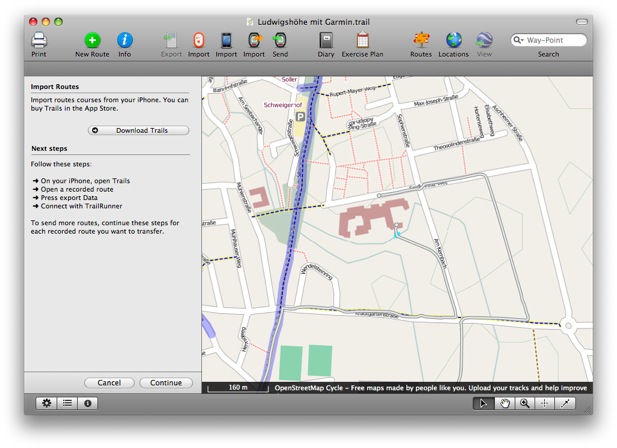
On your iPhone, open Trails and select a recorded track. Press Export and press the TrailRunner button as depicted below.
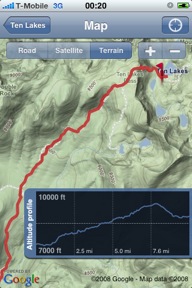
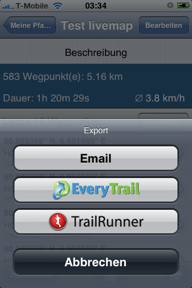
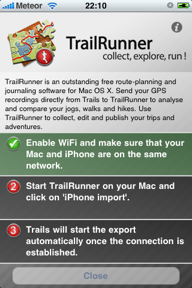
TrailRunner and Trails will detect each other automagically and the selected track will be transfered to TrailRunner. The course of the track will be depicted immediately in TrailRunner.
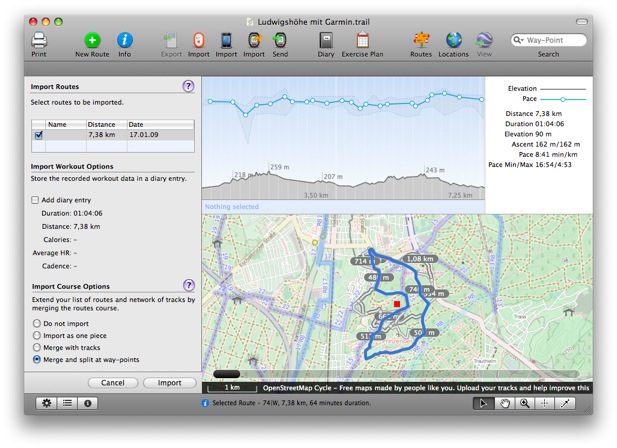
After the course was received in TrailRunner you’ll see the regular workout import pane you might already know. Choose any of the import options and probably add a diary entry for this recording.
As of this writing both application versions are not yet available to the public
> Trails Website
TrailRunner 1.9 - Work in Progress
Within this release I am re-factoring a lot of very old code to have a better migration path to 2.0 and later releases. Currently in the works:
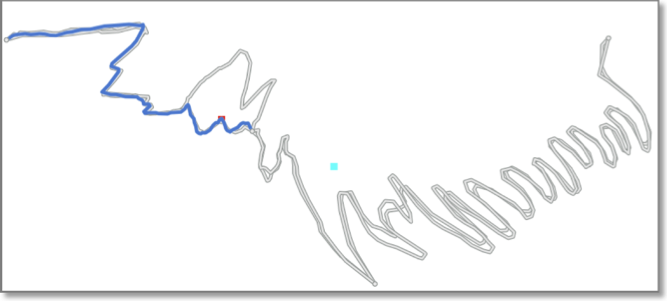
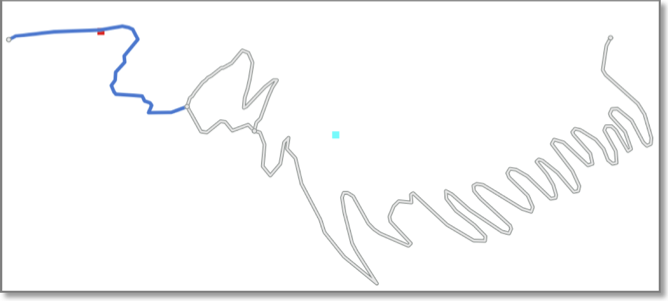
Route and Network Merge -- This now really works. The most complex part of TrailRunner is now much faster and supports full undo for all operations.
Intermediate Tracks -- Already introduced in 1.8 the algorithm is now capable to merge tracks and calculate an intermediate path. This is being done weighted meaning the more often you run a track course and intermediate-merge the recordings, the more accurate the elevation profile will get over time.
Other parts I am working on are still hidden or unused so nothing to talk about at the moment.
In case you would like to become a beta tester, please subscribe to MacDeveloper.net (see post below) I’ll post a first release soon.
Happy Christmas and enjoy the holidays.
- berbie.
Heartrate zones
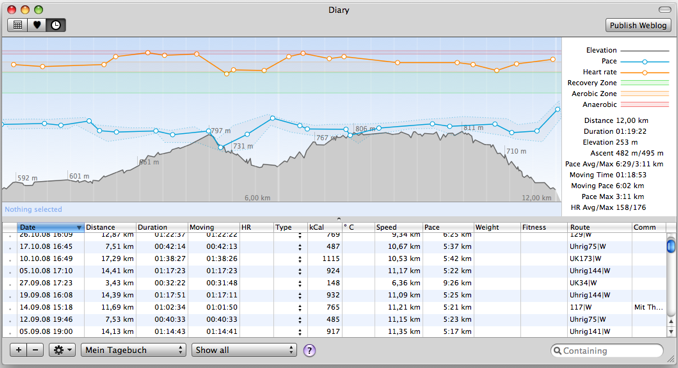
It might get rather philosophical on what heart rate ranges the different zones are defined. I decided on the following:
In green the Energy Efficient or Recovery Zone, up to 60% of you maximum heart-rate to develop a basic endurance and aerobic capacity.
In orange the Aerobic Zone, 60% up to 75% of your maximum heart-rate. Will develop your cardiovascular system.
In red the Anaerobic Zone, 85% up to 90% of your maximum heart-rate. Training in this zone will develop your lactic acid system.
MacDeveloper - Filing TrailRunner Bugs And Feature Requests
TrailRunner is now part of the MacDeveloper Testing Network.
“MacDeveloper helps companies and individual software developers alike improve the quality of their products by providing a platform to have their applications properly tested from a well informed, and energetic Beta Pool. It’s an opt-in service for testers who love what the Mac community offers and genuinely want to test.”
Because MacDeveloper uses a clean and structured interface to sort, comment and file bugs and feature requests I would suggest that everyone wanting to become a beta tester for TrailRunner subscribes to the Testing Network.
But — as always — you can still contact me directly if you have any questions or general feedback. MacDeveloper is just another good way to communicate with me.
Enjoy the holidays…
> MacDeveloper
TrailRunner 1.8 - View your iPhone GPS Recordings
TrailRunner and iTrail require domestic Airport/Wifi network to transfer data from the iPhone onto your Mac.
This is how it works:
Buy iTrail
If you did not already, buy iTrail in the app store and make some route recordings.
> Website
Transfer Routes

An importer pane will open on the left hand side of the main window. Follow the steps described there.
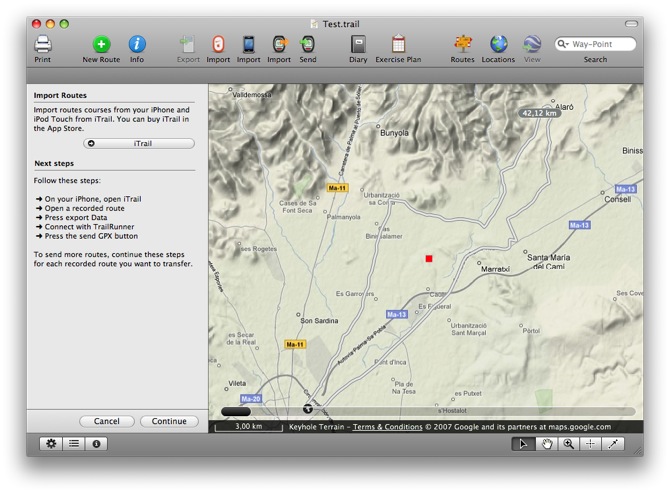
In the current version of iTrail (shown on the left), TrailRunner and iTrail Desktop are the same. This will change in the future to something like in the right screenshot (taken from a preview build of iTrail 1.7).
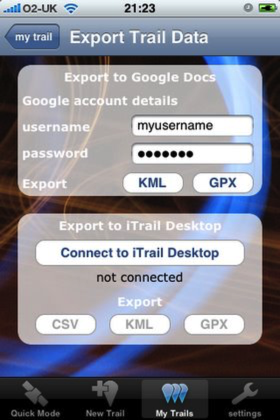
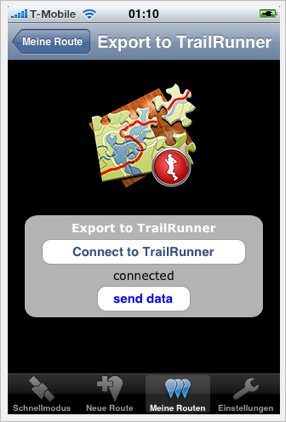
It is important to know that TrailRunner can not interpret the proprietary CSV file format of iTrail. The GPX file format is the one you should choose for the transfer.
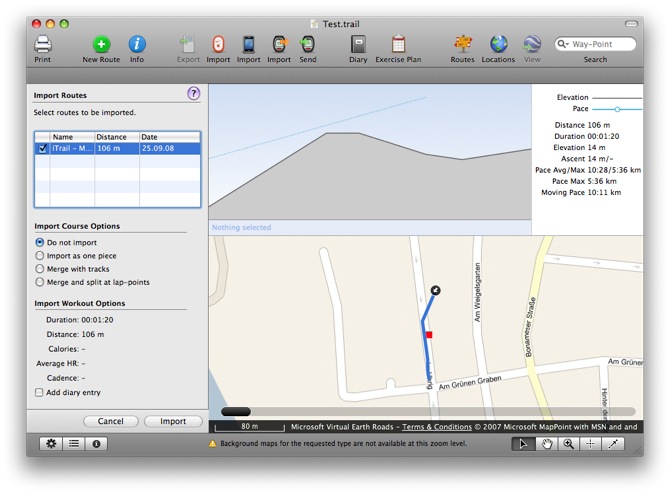
After the course was received in TrailRunner you’ll see the regular workout import pane you might already know. Choose any of the import options and probably add a diary entry for this recording.
Import and Export for Garmin Edge 705
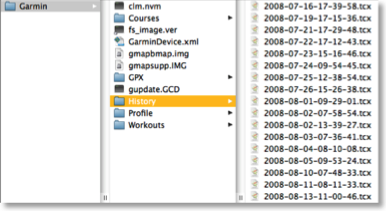 It’s pretty easy to open these in TrailRunner. Just select a bunch and drag them onto TrailRunner and you’ll see them there.
It’s pretty easy to open these in TrailRunner. Just select a bunch and drag them onto TrailRunner and you’ll see them there.
This week I implemented the other direction. TrailRunner can now write the native file format for the newer Garmin devices, with the .tcx file extension.
There are a few steps to follow and it’s very convenient after that:
> Right-click on the control bar
> Choose Cutomize Toolbar…
> Drag the Export as TCX icon into your toolbar.
Next, when you like to export a route course onto your Edge, just select the route, press the Export button and save the route into the courses folder of the edge.
That’s it.
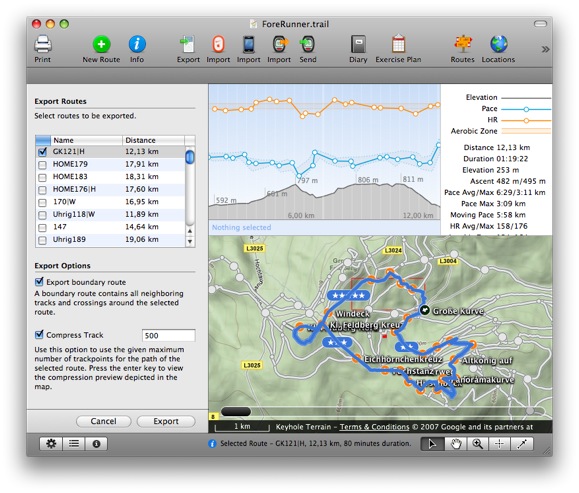
TrailRunner 1.8 - Share your Routes
Open Route Sharing
You’ll find the new menu command under File > Share Routes.
Login
Get an account at GPSies.com and log in.
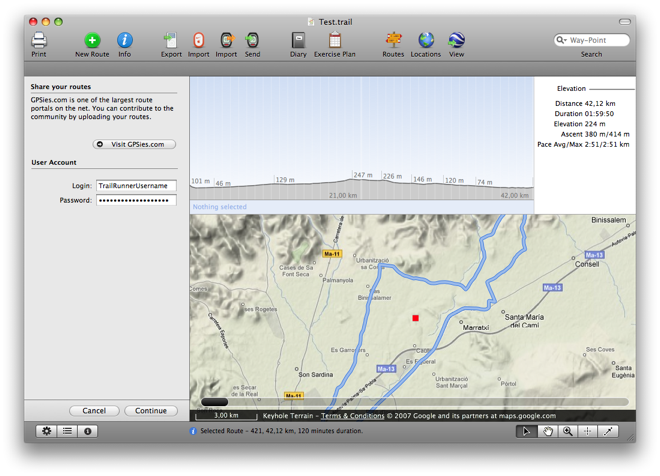
Choose Routes to Share
Select the routes you want to share by placing a check mark.
For each chosen route, enter your route description. If you’d like to reference to other websites for detail, TrailRunner will automatically detect hyperlinks.
Choose your descriptions wisely as they will help others follow the same course as you did (even with GPS devices this is still recommended)
Select a suitable activity for your suggestion and press upload.
Within the GPSies.com portal you can still refine your route descriptions at a later point. Have fun…
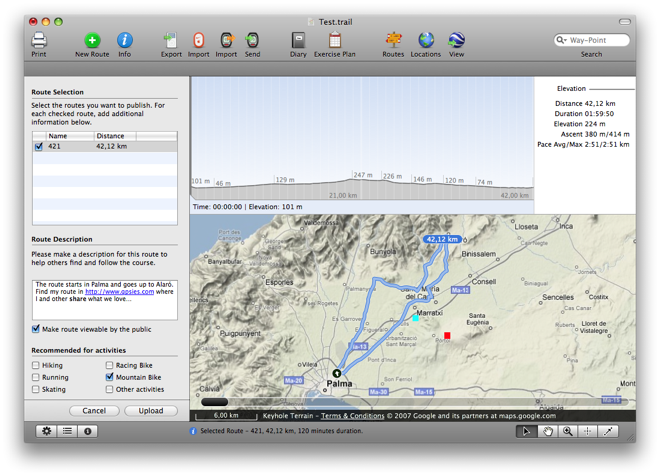
Download a Preview Build of TrailRunner with this feature
TrailRunner 1.8 - GPSies on the Run

The route course lookup is accessible through either the File > Find Routes Nearby command or the new toolbar-icon. A new importer pane will open on the left displaying all routes available near the current map location. Browse, check and import what you like and use TrailRunners merge and planning options to individualize what others have already explored for you.
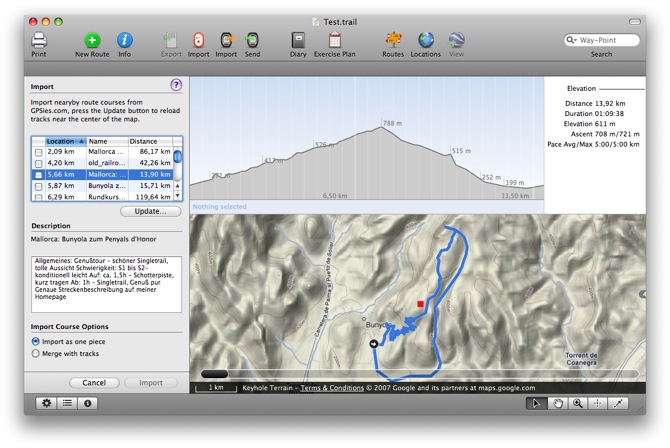
TrailRunner 1.8 - Borderless Freedom
Have fun and thanks for your feedback!
> Download
User Interface
Reworked the overall application design to match the current state of the art
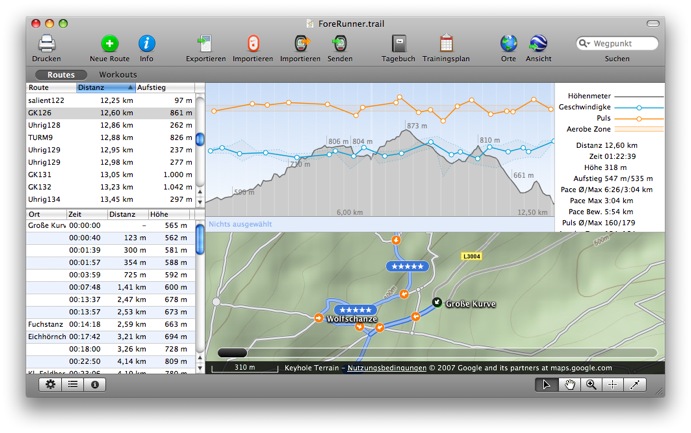
Map loading
Although already improved much in 1.7 this now should be it.
Track editor
Selections within the profile chart, route slider, track editor and route description window are now fully synchronized.
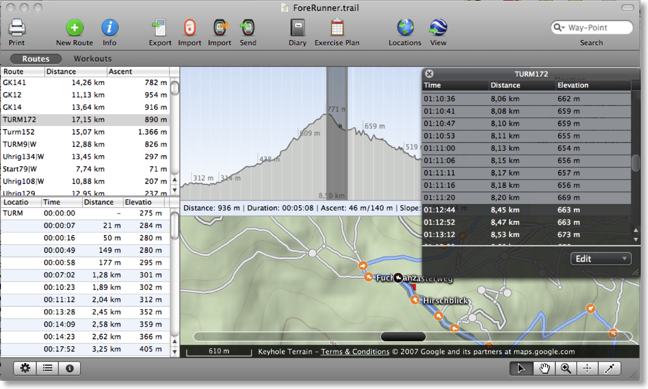
Routes vs. Workouts
One of the biggest problems for TrailRunner newbies was, that the differences between a route and a workout / the main document and the diary wasn’t intuitively clear. So I now changed the interface to make both approaches available in the main window.
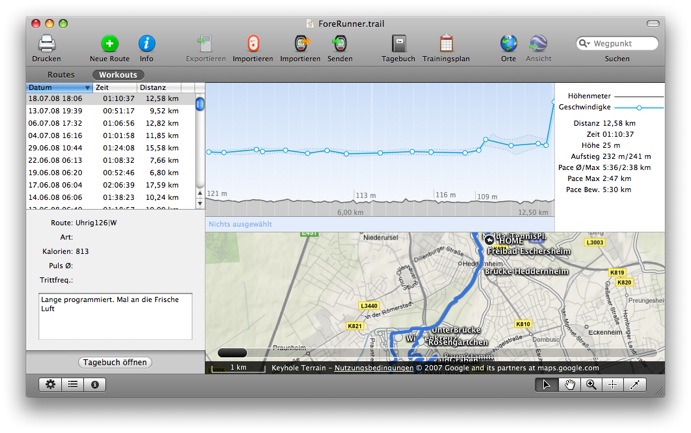
Download here: http://trailrunnerx.com/download-beta-redirect.html
NanoMaps for Mobiles

Images sizes for different displays
For all who do not know the resolution of their device I started a collection for common devices like the T610 on the left. You can find the list in the Library. If you did successfully export your directions onto any device that is not listed there, please leave me a note what device you are using and the resolution that fits best on its screen.
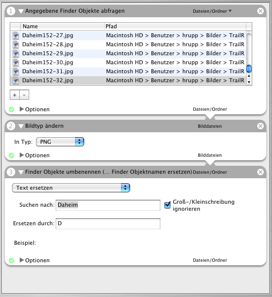
TrailRunner exports the images as jpegs. Unfortunately not all cellphones can display them (like the K610i). Therefore you first need to convert the images to the png format. Heiko noted this and has sent screenshots of his Automator Action to easily convert the images :
- Select Files from Finder
- Change Image Format to PNG
- Change Finder Object Names
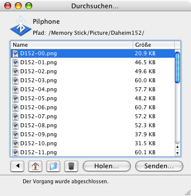
In general I expect you to transfer the NanoMaps onto your cellphone using the Bluetooth File Exchange Application. Browse your device and drag the images into its pictures directory.
TrailRunner 1.7 - Released
What's new in 1.7:
Merge
Rewrote the merge elements algorithm to be more stable, faster and to support more operations to be undoable. It's not complete yet but given the fact that this is extremely complex, I am very happy with what I have learned and was able to dig out as the current core. Also reduced the geographic snap-in grid from 20 meters to 10 meters.
Workout History
I am at rewriting the old overall history diagram. Instead of the once fancy idea of having adaptive time intervals like "Summer 06" I now go the conservative way of weeks. The screenshot below should illustrate what I mean. As you can see the diagram type is identical to the workout analysis graph meaning you have the same analysis features.
New is the deviation background behind the line. As before, TrailRunner displays the statistical median for an interval but now gives you an idea in what value range this median lies within (see the grey background with the dotted outline)
Weblog
The weblog now also publishes a zoomed image along with the thumbnail left to the weblog entry. Click on the thumbnail to see the enlarged version. Find an example in my own weblog.
Nike+ SportBand and nikeplus.com
Originally I had planned to access the new Nike+ SportBand workout data much like I access an iPod. But it turned out to be impossible. But then I learned how easy it was (for me) to access a users complete workout store at nikeplus.com. The consequence? Register at nikeplus. Set goals, run competitions, put yourself into the spotlight and then download your personal data back into TrailRunner—on your Mac. It's your property. Find all this behind the Nike + Apple SportKit toolbar button.
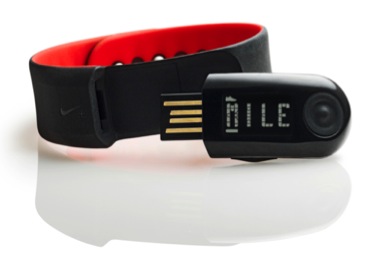
Get the latest changes from the Release Cast
Download the latest TrailRunner 1.7 Release Download
Download the last TrailRunner 1.6 Release Download
TrailRunner 1.6 - New Layout Mimic
Mostly important, the stupid you first have to create a network of tracks and then think of your routes limitation is now gone. All first time users have only their route in mind and don't care a straw about any conceptual limitations in TrailRunner. So I finally removed another annoying limitation: Just press the green New Route button and start creating your route while in reality you create a track and concurrently add it to the piggyback route. The Layout and calculate routes chapter in Help has a video tutorial illustrating this:
Changing the course of a route is an old, yet one of the first features, of TrailRunner — though most users might not be aware of it. It's simple: Drag any way-point that's part of the routes course onto another free way-point and reroute the route over that point. The new behavior is that while you are dragging you get a visual preview of what the result of the reroute will look like. As with the new layout engine, undo should now be fine with this operation too. Have a look:
TrailRunner 1.6 - Community and tracks nearby

You still might know GPSies from one of my previous posts. GPSies is a site that stores and visualizes running courses or Mountain Bike Tracks users have uploaded to share. TrailRunner now integrates with GPSies in two ways:
Display weblog tracks
Every weblog entry now has a new link that displays the attached route at GPSies. This makes it convenient for your visitors to quickly investigate the route and not just download the GPX or KML files.
Find Tracks Nearby
For the current location in your document, TrailRunner opens a new browser window and displays what GPSies has to offer for this region. To do this, use File > Show nearby tracks
When GPSies has opened, you'll find a search pane on the right that will show you routes nearby. If you have found a route that is of any interest to you, download the route. Drag the downloaded file onto the TrailRunner application icon in your dock and you can merge the new route into your main document.
I have the strong feeling I don't have to tell you how cool this is.
> http://www.gpsies.com
TrailRunner 1.6 - Improved Polar Workout Import
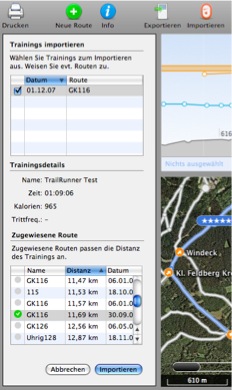
- Press the import button
- Use TrackRecord to read in your workout data
- Quit TrackRecord
- Press the continue button in TrailRunner
- Select workouts to be imported and assign routes.
Assigning a route will then merge the workout recordings with the TrailRunner route, giving you a good overlay of both.
And this also answers one of the most frequently asked questions: TrailRunner requires your Polar recordings to contain distance information. If that is not the case, the workout can't be imported. The reason is that TrailRunner is distance based and not time based. To overlay a distance based route with e.g. heart-rate information, the workout recording must be in the same unit meaning to be distance based too. This is a core concept and a time based approach will never be implemented into TrailRunner.
Have fun with another preview release:
> Download
TrailRunner 1.6 - Export and Retrace
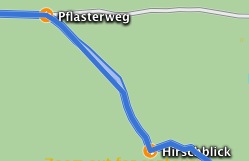
Boundary route: The idea behind this is to get all crossings exported without exporting the whole track network. As a track network is not part of the conceptual background in GPX files, this "pseudo" route will act as a hull around the selected route. Unfortunately my Garmin ForeRunner is not able to display more than one course at a time but it might be useful in other cases.
Compression: If you export more than one route into a GPX file the amount of data might overrun your devices memory limits. Compression might help to reduce the amount. A visual preview of the selected track depicts what the compressed track looks like.
The latter new feature are track animations and a route slider. If you previously selected a checkpoint in the left hand table and used the arrow-down key to browse through the course of your route (what I do to memorize the course before I go out, even though you have electronical cheat sheets like NanoMaps and Send To GPS) TrailRunner will now retrace the course of the track segment up to the next checkpoint. Additionally, the new route slider at the bottom of the map lets you browse through the course of the route much the same way as coverflow in Leopard does with files.

If you are a thrill seeker or would like to be a cheer leader, download a nightly build here:
> Download
Enjoy!
At this point I'd like to thank everybody who gave me feedback and motivation for the TrailRunner project in the past year. The project still satisfies me very much and we'll see many more updates in the future. All the best to everybody for 2008…
QuickTutorial: Using TrailRunner with your Polar RS200
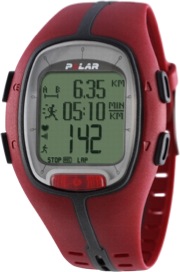
- In TrailRunner Preferences > Synchronize : Select TrackRecord as your Helper App
- Press the download Button to get TrackRecord from bluecrowbar.com
- Close Preferences and open your main TrailRunner document.
You might in advance create routes that reflect the courses of the workouts being imported. To learn how to create routes, first read the QuickGuide Tutorial - Press the Import (from heart rate monitor) Button in the upper tool-bar.
- TrackRecord will start up. Import your workouts and Export the Sessions to your Desktop. (Please make sure that you use the english date format: mm/dd/yy when you export your files)
- Now drag each exported workout session onto the main TrailRunner window, the import pane on the left will open.
- Select a matching route and press the add Button.
A new diary entry will be added combining the information from the selected route and the imported workout
